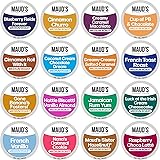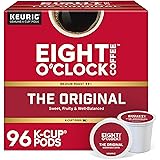Mastering the Art of French Press Coffee: A Beginner’s Guide to Delicious Home Brewing
Do you ever wonder how to achieve that perfectly rich, full-bodied cup of coffee at home, without complicated machinery or endless preparation? As seen in the video above, the humble French press stands out as an exceptional choice for brewing delicious French press coffee. Renowned globally for its elegant simplicity and the superb quality of its brew, the French press offers an accessible pathway to a consistently satisfying coffee experience.
Indeed, this classic brewing method, often referred to as a cafetiere, requires minimal fuss yet delivers maximum flavor. It employs a simple mesh filter to separate the coffee grounds from the liquid, allowing for a thorough extraction that highlights the nuanced notes of your chosen beans. Let us delve deeper into the precise techniques and considerations that transform a basic brewing device into an instrument for crafting truly remarkable coffee.
Understanding the French Press Advantage
The allure of the French press lies fundamentally in its straightforward operation and the distinct flavor profile it produces. Unlike drip coffee makers that rely on paper filters, the French press utilizes a metal mesh filter. This allows more of the coffee’s natural oils and fine particles to pass into your cup, thereby contributing to a richer, more viscous texture and an intense, full-bodied flavor that many coffee aficionados cherish.
Furthermore, its design facilitates brewing multiple cups simultaneously, which is incredibly convenient for households with several coffee drinkers or for those who simply enjoy a larger volume. The absence of electricity or disposable filters also positions it as an eco-friendlier and more robust brewing option, ideal for both everyday use and travel. Consequently, mastering this method ensures you can enjoy excellent coffee virtually anywhere.
Selecting the Ideal Coffee Beans for Your French Press
The foundation of any delicious cup of coffee begins with the beans themselves. For French press brewing, the choice of coffee roast significantly influences the final taste. It is highly recommended to opt for what is known as ‘filter roast’ coffee rather than a darker ‘espresso roast.’
A filter roast is specifically developed to bring out a more balanced and intricate flavor profile when steeped, which is precisely how a French press functions. Espresso roasts, conversely, are typically roasted darker to withstand the intense pressure of an espresso machine, which can sometimes lead to a more bitter or overly bold flavor when prepared in a French press. Therefore, selecting a quality, freshly roasted filter coffee will undoubtedly provide a superior and more harmonious flavor in your finished brew. Imagine if you used a dark, oily espresso roast; the resulting cup might be overwhelmingly strong, masking the subtle complexities that lighter roasts offer.
Precision in Ratio: Coffee to Water
Achieving a balanced and flavorful French press coffee hinges upon maintaining the correct coffee-to-water ratio. As demonstrated, a general guideline suggests using approximately 12 to 15 grams of coffee for every 250 grams (or one cup) of water. This translates to roughly two tablespoons of coffee per cup. However, personal preference plays a significant role here; some prefer a stronger brew, while others favor a milder one. It is advisable to start with this recommendation and then adjust slightly to suit your taste.
For instance, if you are brewing a larger batch, such as one liter of water, you would multiply the coffee amount accordingly. As mentioned in the video, brewing one liter necessitates around 50 grams of coffee. This precise measurement helps ensure consistency, preventing your coffee from being either too weak or overly concentrated.
The Crucial Role of Grind Size
Perhaps one of the most critical factors influencing your French press coffee’s flavor is the grind size. For French press, a medium to coarse grind is generally preferred. This coarser grind is essential for two primary reasons:
- Prevents Over-extraction: A coarser grind has less surface area exposed to water, slowing down the extraction process. Given the longer contact time in a French press (typically four minutes), a finer grind would lead to over-extraction, resulting in a bitter or astringent taste.
- Minimizes Sediment: The mesh filter of a French press is not as fine as a paper filter. A coarse grind helps prevent tiny coffee particles, often referred to as ‘fines,’ from passing through the filter and ending up as sediment in your cup.
Nevertheless, the precise coarseness can be fine-tuned to your preference. If your coffee tastes too bitter, consider grinding coarser for your next brew. Conversely, if it appears too weak or even sour, a slightly finer grind might be beneficial. Experimentation with grind size is encouraged, as it offers the most significant leverage over your final coffee flavor. Imagine the frustration of consistently bitter coffee; a simple adjustment to your grinder could be the solution.
The Brewing Process: Step-by-Step Excellence
Once your beans are perfectly ground, the brewing process itself is remarkably straightforward, yet it benefits greatly from attention to detail:
- Add Grounds: Place your measured coffee grounds into the bottom of your cafetiere.
- Pour Water: With water straight off the boil (ideally around 90-96°C or 195-205°F for optimal extraction), begin pouring it over the grounds. Ensure all the grounds are thoroughly saturated, promoting an even extraction.
- Set Timer: Once all the water has been added, immediately start a timer for four minutes. This duration is widely regarded as the sweet spot for a balanced and consistent French press brew. While the coffee steeps, you may place the lid on the French press to help retain as much heat as possible, which is vital for proper extraction.
This four-minute immersion allows the water to fully extract the desirable flavors and aromas from the coffee particles. Deviating too much from this time can lead to under-extraction (weak, sour coffee) or over-extraction (bitter, harsh coffee). If, after four minutes, you still find your coffee unsavory, remember to revisit your grind size before adjusting the brew time.
The Post-Brew Decision: Pressing or Scooping?
Upon the completion of the four-minute brew time, you arrive at a critical juncture with two distinct paths, both yielding excellent results but with slightly different characteristics:
Option 1: The Cleanliness Path (Scooping the Crust)
This method, favored by many for its superior clarity, involves an extra step. First, carefully remove the lid from the French press. You will observe a ‘crust’ of coffee grounds floating on the surface. Using a spoon, gently scoop off as much of this crust as possible. This action effectively removes a significant portion of the floating grounds, thereby preventing them from being pushed down with the plunger and potentially re-extracting.
Subsequently, replace the lid and slowly press the plunger down, stopping just before it reaches the very bottom. This ensures that any remaining fine particles are adequately trapped beneath the filter. This method, while requiring a little more time and effort, makes a significant difference to the cleanliness and purity of your final cup, minimizing sediment and bitterness.
Option 2: The Expedient Path (Direct Press)
For those prioritizing speed, once the four minutes are up, you can proceed directly to pressing the plunger. The key here is to press down very slowly and steadily. Rapid pressing can force grounds through the mesh filter, resulting in a muddy cup. Similar to the first method, do not press the plunger all the way to the absolute bottom; leaving a small gap prevents compaction of the grounds, which can also lead to over-extraction of unpleasant flavors.
Regardless of the method chosen, immediately after pressing, it is paramount to pour all the brewed coffee out into cups or a separate carafe. Leaving the coffee to sit in the French press, even after plunging, allows it to continue brewing with the grounds. This continued contact will inevitably lead to an astringent, bitter flavor in subsequent cups, particularly in the last few. Decanting is the definitive step to halt the brewing process and ensure a consistently delicious flavor profile throughout your entire batch of delicious French press coffee.
Cleaning and Maintenance of Your Bodum French Press
Proper cleaning ensures the longevity of your French press and, more importantly, prevents residual coffee oils and grounds from imparting stale flavors to future brews. It is recommended to hand wash your cafetiere after each use. Pay particular attention to the metal mesh filter, giving it a thorough rinse. Hot water, perhaps even boiling water, can be especially effective in dislodging trapped grounds and dissolving accumulated coffee oils.
Regular maintenance ensures that your French press remains a beloved and reliable tool in your coffee brewing arsenal. Furthermore, ensuring it is completely dry before storage prevents mildew or unpleasant odors. A well-maintained French press, like the Bodum 8-cup copper press mentioned, is a joy to use and a gateway to countless excellent cups of coffee.







